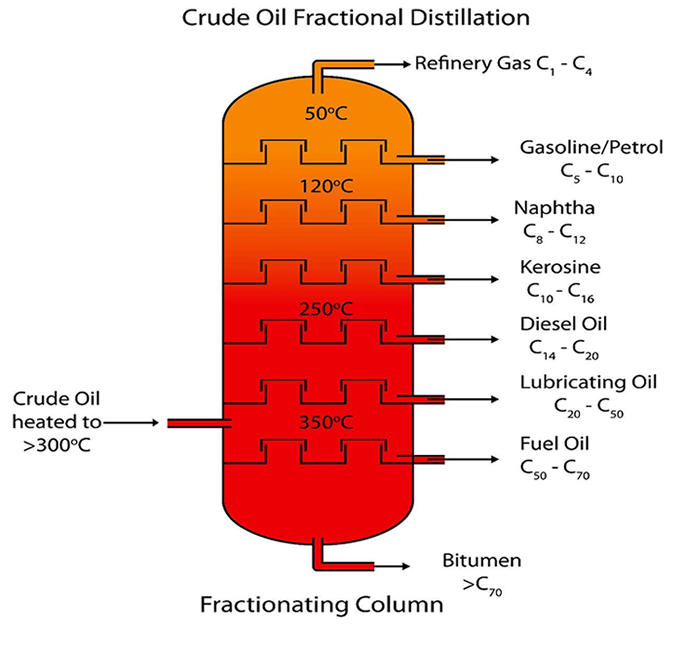Introduction
Used motor oil can be considered as an integral part of mechanisms and structural materials. At the end of service life, a significant amount of waste lubricants are produced, which are currently one of the main types of technogenic wastes that have a very negative impact on the environment – atmosphere, soil, and water.
About 30% of lubricants are irretrievably lost during the operation of equipment: it burns in engines, evaporates, spills, washed away, etc. The remaining part is undergone to severe changes under the influence of operating conditions and must be removed from the machinery.
Despite the fact that waste lubricants represent a significant environmental hazard, they are valuable secondary stock and must be collected and utilized. This is a very complex process organizationally and still remains a serious problem.
Under the aging of motor oil is implied oxidation, contamination by the products of combustion of fuel and foreign impurities, as well as products of decomposition of additives during operation. Used motor oil often contains metals (usually as the result of the engine or bearing wear, or the inclusion of these metals in oil additives), chlorinated hydrocarbons and other organic compounds, including a lot of that are listed as priority pollutants. The presence of such toxic organic substances as benzene or naphthalene is usually associated with the oil formulation itself.
It is important to notice that motor oil does not wear out, it becomes contaminated after a cycle of use. A proper treatment technology allows us to remove priority pollutants (polyaromatic hydrocarbons, toxic metals, chlorinated hydrocarbons) from used oil, so used motor oil can be re-refined to base lubricating oil, processed into fuel oil or applied as stocks for petroleum-based production.
Some used motor oils have a high contamination level and it increases the difficulties in the operations and generates hazardous byproducts as secondary pollutants. A large amount of the recycled used oil is combusted for energy utilization often creating air pollution problems.
Nowadays in Kazakhstan, there is no unified centralized system for collecting, regenerating or disposing of used lubricants, organizationally and legally approved, and having unified requirements for the received products.
In addition, there are no objective and generally accepted criteria for the aging of motor oils. The increase of the lubricant service life, which is economically advantageous, in most cases leads to the accumulation of environmentally hazardous products in them, which complicate the utilization processes.
Treatment and regeneration of used motor oils is extremely important, due to the high cost and in some cases the environmental hazard of such products (polychlorinated biphenyls, phosphoric acid esters, alkylbenzenes). Regeneration involves the restoration of the quality of the lubricant to a level comparable to the initial. Modern schemes of regeneration of wasted motor oils used in developed countries include physical and physicochemical processes – coagulation, sulfuric acid purification and adsorptive purification by synthetic or natural sorbents (bentonites, clays).
Material and Method
Ultrasonic treatment is proposed to partially remove toxic compounds from the used motor oil. Target contaminants that it is necessary to remove from the oil are: heavy metals, chlorinated hydrocarbons, benzene, toluene, ethylbenzene, xylenes, polyaromatic compounds.
Ultrasonic irradiation is widely used in environmental cleaning technologies to degrade many toxic compounds in contaminated soils and waters. It was also proved that it has a positive effect on the upgrading and recovery of fossil fuel. The free radical chain reaction is supposed to be the dominant reaction to cause the effects in these systems. The ultrasonic irradiation has the ability to initiate and enhance the free radical formation from hydrocarbons. So it could be assumed that ultrasonic irradiation would effectively remove or degrade harmful substances from used oil. In the case of a technically and economically proven effect, the chemical-aided ultrasonic irradiation process could be used not only as of the pretreatment step for used motor oil treatment [10].
The adsorption purification is also an attractive special method to improve the quality of used motor oil, allowing at the same time to reduce the content of sulfur, nitrogen and polyaromatic compounds in fuel to meet modern quality standards. The optimum implementation of the process is a selective adsorption treatment, carried out under mild conditions at moderate temperature and atmospheric pressure. The advantages of this method include high efficiency, the ability to carry out the process without the participation of molecular hydrogen under relatively mild conditions, simplicity of the technology, equipment, low capital, and operating costs, as well as safety.
Vermiculite is going to be researched as an absorbent. Vermiculite is a hydrous phyllosilicate mineral. It undergoes significant expansion when heated. Exfoliation occurs when the mineral is heated sufficiently, and the effect is routinely produced in commercial furnaces. Vermiculite is formed by weathering or hydrothermal of biotite or phlogopite. Kazakhstan’s “Kulantauskoe” deposit of vermiculite is located in the Tyulkubas district of the South Kazakhstan region.

